Successful site selection requires sophisticated tools and comprehensive information to make informed decisions. We understand that choosing the right location can make or break a business venture. Let’s explore the crucial software solutions, data types, and reporting tools that form the foundation of effective site selection.
Geographic Information Systems (GIS) and Mapping Software
Modern site selection begins with powerful GIS platforms that provide detailed spatial analysis capabilities. These systems integrate multiple data layers, from basic topography to complex demographic overlays, creating a rich visual representation of potential locations. Leading solutions like ESRI’s ArcGIS and QGIS offer advanced features for analyzing trade areas, calculating drive times, and identifying optimal locations based on multiple criteria.
The most valuable aspect of GIS software is its ability to combine various data sources into actionable insights. For instance, you can overlay customer density maps with transportation networks to identify locations that maximize accessibility while minimizing competition. These tools also enable you to create custom reports highlighting key metrics such as population density, median income, and competitive landscape within specific radius rings.
Essential Data Sources and Analytics
The quality of your site selection decision depends heavily on the data feeding your analysis. Critical data categories include:
Demographic Data: Beyond basic population statistics, modern demographic data should include detailed household composition, income levels, and spending patterns. This information helps predict market potential and customer behavior patterns.
Mobile Analytics: Contemporary site selection relies heavily on mobile device data to understand foot traffic patterns, customer movement, and dwell times. This real-time data provides invaluable insights into consumer behavior and location preference.
Economic Indicators: Local economic data, including employment rates, business growth trends, and commercial development plans, helps predict future market conditions and potential return on investment.
Competition Analysis: Detailed information about competitor locations, market share, and performance metrics enables businesses to identify market gaps and opportunities.
Reporting Tools and Decision Support Systems
Converting raw data into actionable insights requires robust reporting tools. Modern site selection reports should include:
Market Potential Reports: These documents combine demographic data with spending patterns to estimate market size and growth potential. They should include detailed breakdowns of consumer segments and their projected spending in relevant categories.
Site Comparison Matrices: Advanced reporting tools can generate side-by-side comparisons of multiple locations, weighing factors like accessibility, visibility, and market potential. These matrices help stakeholders make objective, data-driven decisions.
Risk Assessment Reports: Comprehensive reports should include analysis of potential risks, from environmental concerns to market saturation, providing a clear picture of challenges and opportunities at each location.
The key to successful site selection lies in integrating these various tools and data sources into a cohesive decision-making framework. Modern software solutions should not only process and analyze data but also present findings in clear, actionable formats that support strategic decision-making.
Remember that while these tools and reports provide valuable insights, they should support, not replace, human judgment in the site selection process. The most successful outcomes typically result from combining sophisticated data analysis with local market knowledge and industry expertise.
***
To get a #ProfessionalGradeMarketing team working for you, contact Ambient Array today.


